The SRAM Eagle is considered one of the most covetable mountain bike drivetrains to date; for many, it’s a serious selling point when it comes to buying their next bike. But what is it about this specific shifting system that’s so good, and how have SRAM got to the top of the market? We paid a visit to this industry giant to find out what goes on behind the scenes.

On a cold Tuesday morning, I enter the vast grounds of SRAM’s headquarters in Schweinfurt. A large clock informs me that it’s 9:00am in Germany, confirmed by my wristwatch. Around the walls, the other clocks ticking away merrily – set to various time zones – are testament to the global focus of this American brand, although its beating heart of drivetrain development is fully in situ, here in Germany, a country famed as an engineering powerhouse. The two men sitting opposite me could not be more different: on the left sits the tall, bespectacled figure of Germany’s Frank Schmidt, SRAM’s head of development, with his calm and composed manner of speaking; next to him sits Chris Hilton, a charismatic American who has embodied the US motto of “Dream big” since he was a kid by making bold, unconventional moves. As a seven-year-old growing up in Alabama, Chris drove his buddies to school in a pick-up. Today he’s head of drivetrain product management. While they’re seemingly worlds apart, these two men have a joint goal to create the ultimate mountain bike drivetrain. When it comes to cycling, their passion is equal, and they’re both fairly symbolic of the success of SRAM.



SRAM’s story to success
A lot has happened since SRAM was founded in Chicago in 1987. From its earliest days with six staff members, it has now cemented its position as a serious global player, with countless locations and production facilities across the globe. SRAM first turned up with a product called GripShift, heralding something of a revolution. Right now, their products cover basically every single part of a bike except the frame. Design and production takes place in myriad locations around the world, but ask about the birthplace of SRAM drivetrains and you’ll discover they all hail from this one, unassuming German town: Schweinfurt.
So why Schweinfurt?
If we’re being honest, Schweinfurt doesn’t immediately conjure up images of a cycling stronghold. There’s a distinct lack of high mountains and the climate can’t compete with places like California, so what made SRAM settle in Schweinfurt? The answer is fairly simple: SACHS. Once the industry leader when it came to internal gear hubs, SRAM brought the bicycle division of the historic Franconia-based firm SACHS in 1997, just ten years after their own launch, consequently getting their hands on the know-how and technology that would spark their continual component progress and benchmark developments. They launched SRAM X0, followed swiftly by SRAM XX, and then the first 1×11 drivetrain landed in 2012, going by the name SRAM XX1.
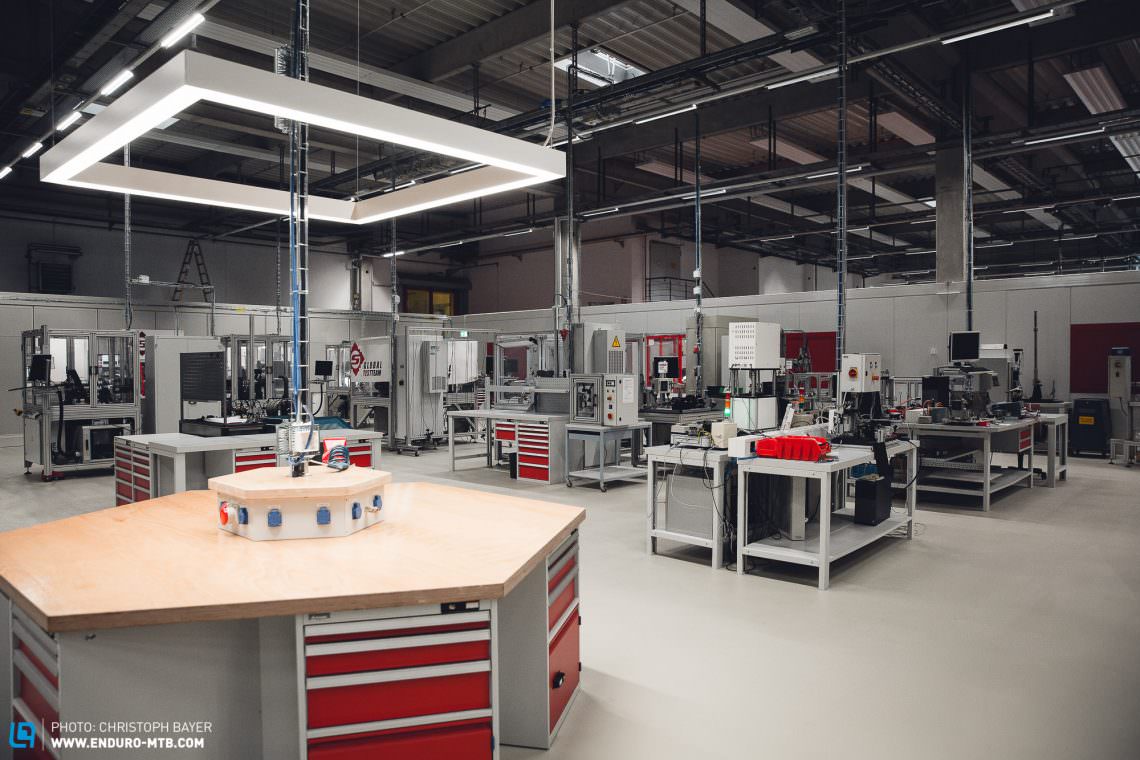


Industrial acoustics replaced by sofa flair
The base in Schweinfurt has changed dramatically over the past few years. The local woods are now home to a veritable mass of trails, and just as much has ensued inside the walls of the SRAM complex. The spacious warehouses that once echoed with the din of hub production have fallen silent since manufacturing was relocated to Taiwan. Restructured and repurposed, they’re now home to many things, including SRAM’s brand new Think Tank. No longer sporting the drab grey interior of their production days, the walls are clinically white and there’s a new peacefulness. The hall has been divided into conference rooms and chill-out areas with sofas and a café – after all, often the best ideas come from chatting over a strong coffee.
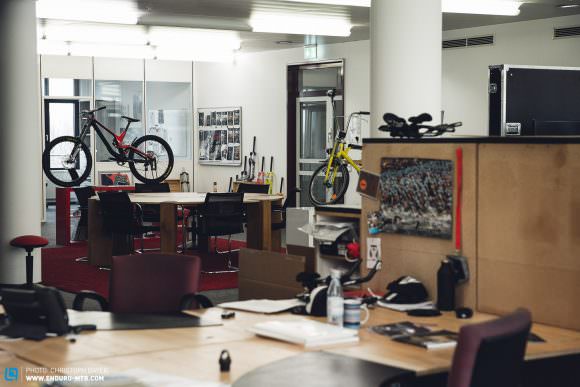

All in one place
All new drivetrain components are developed right here in Schweinfurt. Their concepts are brought to prototype, which are then not only finished here in-house, they’re also rigorously tested in SRAM’s immense test lab and in real-world riding too. This gives the team the invaluable opportunity to test and measure each system as a whole, as one component impacts another while shifting, and each parameter affects the next. This instant access to the components enables the team to push through concepts quickly and make rapid decisions and changes in the process based on technological data.

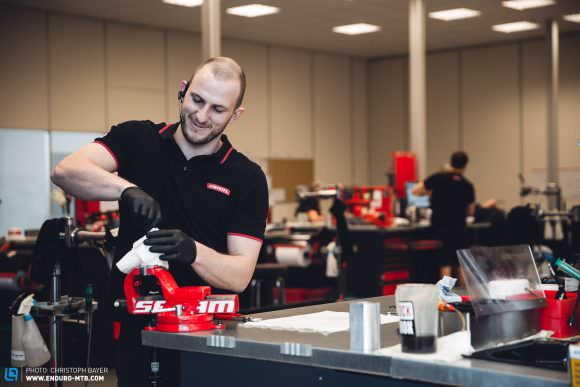
So German
We Germans aren’t just known for our socks-and-sandals combinations and our excessive consumption of beer and schnitzel – we’ve also got a reputation for being pedantic and disciplined in the pursuit of perfection. Naturally, we at ENDURO aren’t able (or willing) to confirm the sartorial bad-style cliché, but the final point definitely rings true. It’s the same sort of meticulous vibe that pervades SRAM too, and the engineers possess a very German sort of love for technical details. It’s crucial too. Frank nods in confirmation, explaining how every single detail has to be backed up by hard facts and that he’ll walk away victorious from any discussion when equipped with diagrams and statistics. Right now, for example, he can state with conviction exactly why the new 12-speed cassette has certain gear steps, or why the angles on a chain ring have been set to what degree.
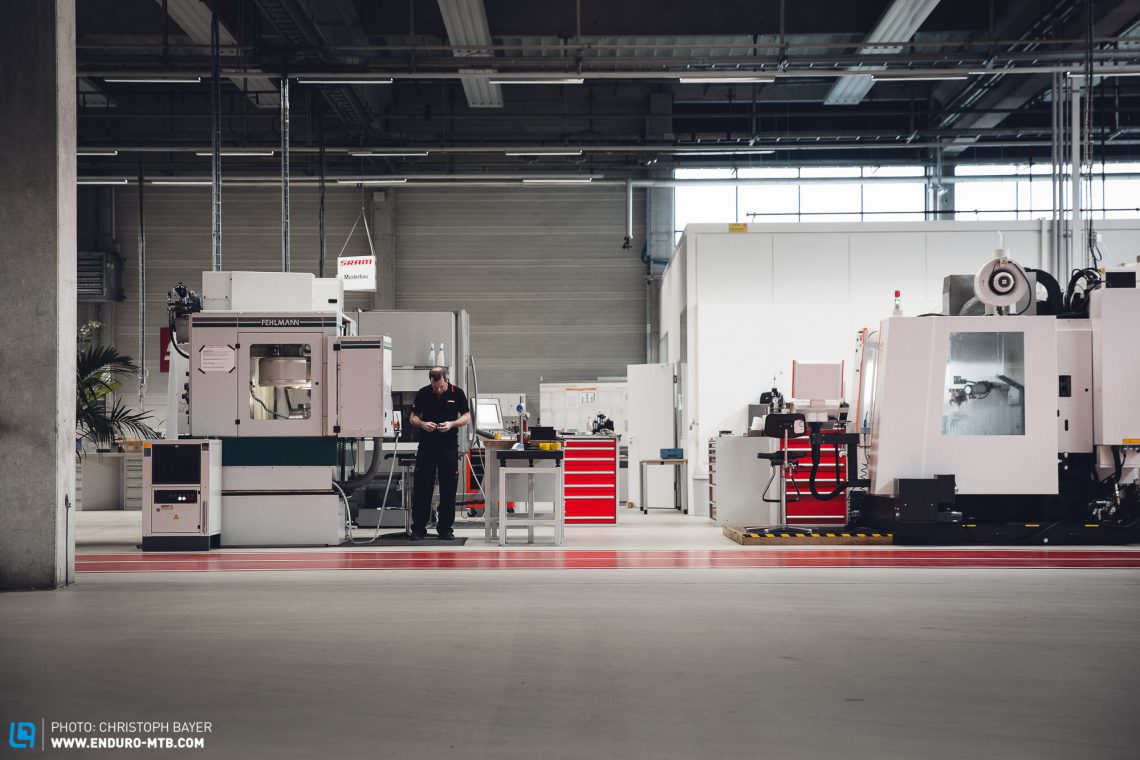
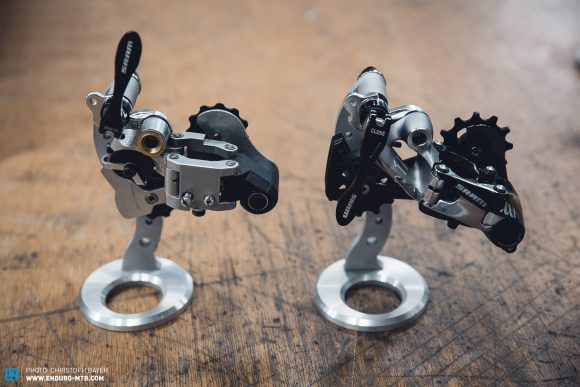


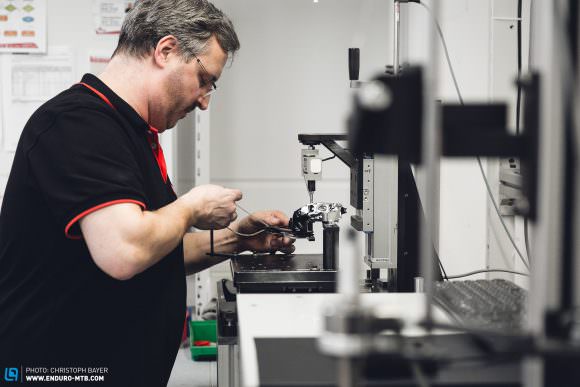
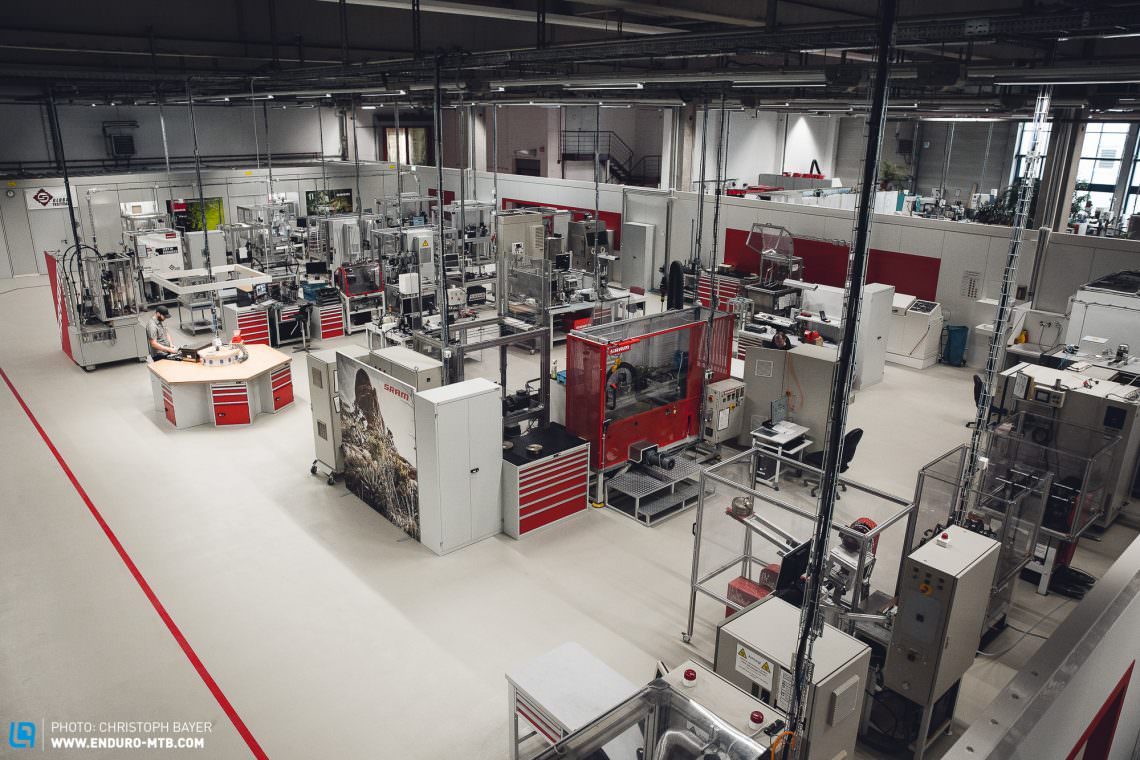
 [/emaillocker]
[/emaillocker]
The performance is what counts
But such technical know-how only goes halfway towards successfully bringing a product to market, so that’s where Chris steps in. At the intersection between the engineers and the marketing team, it’s his role to not only position the product on the market, but also to relay an explanation of the product for the masses. In order to get the attention of consumers, a product has to be comprehensible, he explains. It’s a task that shouldn’t be underestimated, especially considering the many innovations that emerge from under SRAM’s roof and the seemingly never-ending flood of new standards and technologies. An engaging narrator who’s capable of weaving stories about the products, he doesn’t care how much the new Eagle weighs; he focuses on how it performs. He shrugs, and says that’s he’s confident that Frank and his team will have taken care of keeping its weight down.


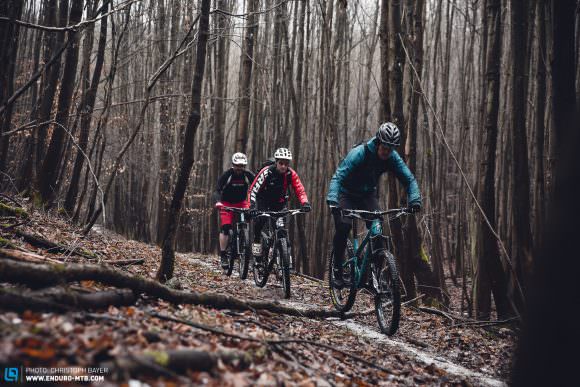
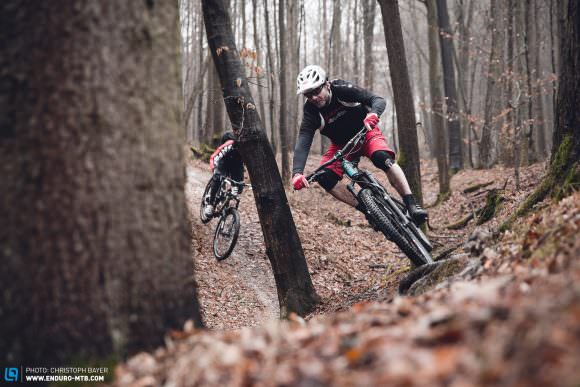

Just as awesome!
We get out for a ride as lunchtime hits, and we’re stoked to be outside. From a German perspective, it is cold, muddy, and slippery but it’s still fun. Being around Chris highlights certain aspects of German character – like how we’re prone to taking a negative slant on things, for example. For Chris, however, these things are all overshadowed by the experience, and he sums it up with one word: awesome! Perhaps it’s this mix of the German love for technical details and American storytelling that has made SRAM such a global success. The result is just as awesome as the new Eagle!
For more information head to sram.com!
Did you enjoy this article? If so, we would be stoked if you decide to support us with a monthly contribution. By becoming a supporter of ENDURO, you will help secure a sustainable future for high-quality mountain bike journalism. Click here to learn more.
Words & Photos:









